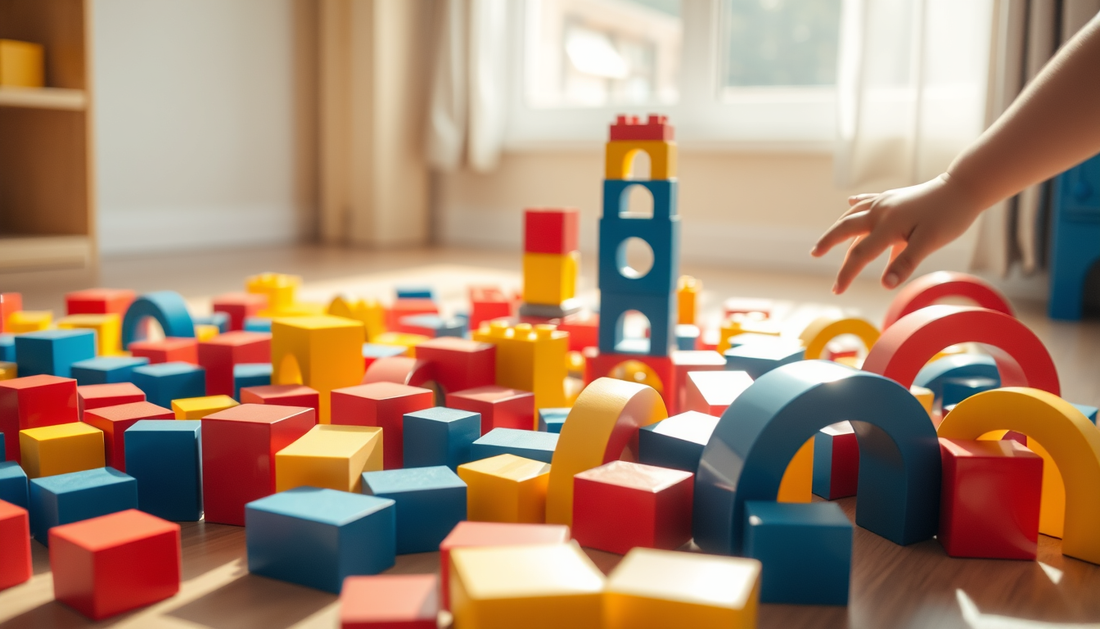Building blocks have been a beloved part of childhood for generations, captivating young minds and sparking endless hours of imaginative play. These humble toys, once simple wooden cubes, have evolved into sophisticated learning tools that continue to shape the development of children around the world.
The history of building blocks can be traced back to ancient civilizations, where basic block play was used to develop fine motor skills and spatial awareness. However, it was the German educator Friedrich Froebel who truly revolutionized the concept of building blocks as educational tools. In the early 19th century, Froebel introduced his "Gifts" - a series of carefully designed wooden blocks and shapes that were intended to foster creativity, problem-solving, and an understanding of the natural world.
Over time, building blocks have undergone a remarkable transformation. The introduction of wooden blocks in the late 19th century paved the way for the iconic plastic blocks that have become synonymous with childhood, such as the beloved LEGO bricks. These versatile toys have not only entertained generations of children but have also proven to be invaluable in the realm of education.
The educational value of building blocks is well-documented. These simple toys have been shown to enhance cognitive development, improve motor skills, and foster creativity and imagination. By engaging children in the process of constructing, deconstructing, and reconstructing, building blocks help develop problem-solving abilities, spatial reasoning, and a deeper understanding of the physical world.
In recent years, the world of building blocks has continued to evolve, with the integration of digital technologies and the emergence of sustainable, eco-friendly options. Augmented reality building blocks, for instance, have brought a new level of interactivity to the classic toy, blending the physical and digital realms to create immersive learning experiences. Meanwhile, the growing demand for environmentally conscious products has led to the development of building blocks made from renewable and recycled materials, ensuring that the joy of building can be enjoyed while minimizing the impact on the planet.
As we look to the future, the enduring appeal of building blocks is undeniable. These simple toys have stood the test of time, captivating children and inspiring creativity, problem-solving, and a deeper understanding of the world around us. Whether in the form of classic wooden cubes or cutting-edge digital innovations, building blocks will continue to be an integral part of childhood, shaping the minds and imaginations of generations to come.
The Early History of Building Blocks
The origins of building blocks can be traced back to ancient civilizations, where basic block play was used to develop fine motor skills and spatial awareness. However, it was the German educator Friedrich Froebel who truly revolutionized the concept of building blocks as educational tools. In the early 19th century, Froebel introduced his "Gifts" - a series of carefully designed wooden blocks and shapes that were intended to foster creativity, problem-solving, and an understanding of the natural world.
The Evolution of Building Blocks
Over time, building blocks have undergone a remarkable transformation. The introduction of wooden blocks in the late 19th century paved the way for the iconic plastic blocks that have become synonymous with childhood, such as the beloved LEGO bricks. These versatile toys have not only entertained generations of children but have also proven to be invaluable in the realm of education.
The Educational Value of Building Blocks
The educational value of building blocks is well-documented. These simple toys have been shown to enhance cognitive development, improve motor skills, and foster creativity and imagination. By engaging children in the process of constructing, deconstructing, and reconstructing, building blocks help develop problem-solving abilities, spatial reasoning, and a deeper understanding of the physical world.
Modern Innovations in Building Blocks
In recent years, the world of building blocks has continued to evolve, with the integration of digital technologies and the emergence of sustainable, eco-friendly options. Augmented reality building blocks, for instance, have brought a new level of interactivity to the classic toy, blending the physical and digital realms to create immersive learning experiences. Meanwhile, the growing demand for environmentally conscious products has led to the development of building blocks made from renewable and recycled materials, ensuring that the joy of building can be enjoyed while minimizing the impact on the planet.
Conclusion
As we look to the future, the enduring appeal of building blocks is undeniable. These simple toys have stood the test of time, captivating children and inspiring creativity, problem-solving, and a deeper understanding of the world around us. Whether in the form of classic wooden cubes or cutting-edge digital innovations, building blocks will continue to be an integral part of childhood, shaping the minds and imaginations of generations to come.

